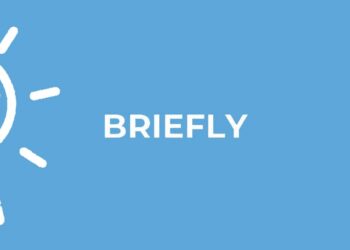
By Tio Nakasole
Given that Namibia is currently in its sixth National Development Plan, now is a good moment to take stock, get in touch, and talk about topics that are both of national significance and mutual interest.
Reading Vision 2030’s preface, in which the late president Sam Nujoma emphasised that “a national vision is a perception of the future, which reveals and points to something new, beyond what is already available and accessible,” brings back many happy memories. “The goal of Vision is to improve the quality of life of the Namibian people to the level of their counterparts in the developed world by 2030,” he added.
All of this points to a national development or transformation agenda that was created to address some of the three main socioeconomic problems of poverty, inequality, and unemployment.
Given Namibia’s progress, these issues are frequently viewed as interrelated, and if they are not adequately addressed in the most recent National Development Plan (NDP 6), the future will unfairly evaluate by those in charge of national planning and development policy as they influence the socioeconomic well-being of the nation.
Phenomena
Poverty is a national phenomenon that cannot be studied in isolation, as it goes hand in hand with inequality and unemployment, thereby pressurise the difficulty of monitoring the aspects of poverty. With reference to Namibia, poverty is particularly common in female-headed households, extended families, inhabitants with low level of education, farmworkers and the marginalised communities such as the suns and dhemba’s tribe to mention but a few.
They became prey to poverty due to their nomadic way life or origin, low literacy rate, as well as access to opportunities. Although the successful country does not guarantee that everyone can be equally well of, but how can Namibia put together a bullet-proof antidote to poverty.
It is undeniably concerning, if not critical, that the high unemployment rate of 36.9 percent in 2023 compared to 33.4 percent in 2018 continue to rise, is causing social unrest and restricting economic growth. Each of the five-year National Development segments was designed to experiment with the realisation of job creation, economic diversification, and the foster sector within the framework of Vision 2030.
This development becomes a challenge as the core of Namibia’s economy, however, is unquestionably dependent on the fluctuations of global commodity markets and export of unprocessed goods.
According to Namibia Statistics Agency report in January, the country’s trade deficit balance stood at a deficit of 2.7 billion, worse when compared to a deficit of 129 million and 2.1 billion recorded in December 2024 and January respectively, which was the lesser of two evil.
There is no doubt, Namibia consumes a lot of foreign goods, services, and activities, which is confusing because most of the commodities that are exported are semifinished and raw materials, such as copper, cut diamonds, gemstones, granite, lead products, marble, uranium, and zinc. Another mysterious reality is, Namibia is a significant producer of uranium oxide but does not manufacture boats, cars, or parts for them.
This has made a home economy that is heavily reliant on imports worse, which in turn kills investment and job possibilities in the processing industries that produce revenue.
Lopsided
Peer review is not necessary to categorise or draw attention to Namibia’s alarmingly high unemployment rate. Undoubtedly, graduates who enter the workforce each year and are not accommodated account for a large portion of the high youth unemployment rate.
In particular, Namibia had underemployment and cyclical unemployment during the COVID-19 pandemic, and if the labour force is not ready to support this new industry, it will soon experience structural unemployment. Khomas region unemployment continues to be a thorn in the flesh of the city due to rural-urban migration; the rural areas failed to provide subsistence living in agriculture and allied activities, and as a result, more feet continue to enter for greener pastures.
One should bear in mind that out of exogenous factors that may be out of our control, the understanding of the bearing it has is that, year in and year out, it hinders development and growth and leads to a low standard of living, high income inequality and even higher poverty in Namibia.
Inequality is another thorn in the flesh of the realisation of Vision 2030 in Namibia. Relatively, Namibia extols the virtues of an upper middle-income status yet enjoyed the unenviable reputation of having the most unequal income distribution in the world, behind South Africa and Brazil. A lack of education and jobs and the legacy of apartheid were some of the main drivers of inequality.
Additionally, there has been mischaracterisation or misguidance of wealth distribution and policies from the rich to the poor, which did not bear the expected outcome. This practice includes willing buyer – willing seller, income tax cut, women’s empowerment, affirmative action, and zebra representation. Obviously, not all have been a drop in an ocean, but the question remains, are all these practices solve the fundamental problems of descent shelter, access to housing, access to capital or to a further extend access to means of production.
Policymaker’s arsenal
Redistribution wealth in itself does not create more goods and services in a nation. A good example is, assume you tax the rich three billion worth of money and use that money for charity programs. In the short run, that initiative prolong the living standard of individuals, but no wealth of goods or services of capital investment have been created from which the majority can be employed, where everyone with disposable income can spend it back to grow the economy.
However, this is not to say government planner should try to abandon all these, but they should try to create a national costume of wealth creation first from its natural resources, that will enable a fully participation of investment in the economy both from local and foreigners.
It was so interesting that in 1990, when the structure of government itself changes significantly, through the commercialisation, which draws the line of demarcation when it comes the government department and other sectors. For this reason, it was designed well for statistical classification, social accounting matrix and data mining in terms tracing the performance and development of key sectors.
Having a good record of key sectors is essential for any domestic economic growth, investing in them, the probability of economic growth will be higher than investment into several non-key sectors. Ultimately, is crucial in the government policy-making process, as it will enable them to tailor policies to the needs of the domestic economy.
Utilize greener pasture
With the emerging industries of oil, gas and green hydrogen, with Namibia’s abundant energy reservoir, energy will position Namibia and if well supported, will have diminish some of these triple challenges. Energy is an important factor influencing this triple challenge as it nearly used in all production of goods and services.
In terms of workforce, it will help Namibia to do immense great amounts of work than they can do if they were to continue to rely on South Africa or Zambia for energy. At the heart of the myriads of developments that surround these projects, a very simple question should be to solve on how will ordinary Namibians benefit, if at all, from any of this?
This is what Namibian so keen to hear. Concomitantly, as these new projects emerge, the area of interest should be access to quality energy services for the inhabitants and equality of job opportunities across races and disadvantaged group, enable Small Medium Enterprises to play a role, while ensuring environment protection.
I conquer with David Landes who also emphatically, stated that “all economic (industrialisation) revolutions have at their core an enhancement of supply of energy, because this feeds and changes all aspects of human activityâ€.
Over and above, these are the main problems that Vision 2030 is trapped in, and for that realisation vision to come to fruition, the government need to get their eyes off decays and focus on the real root cause of the problem when it comes to employment creation strategies, inequality gap alleviation strategy in order to nib in the bud the level poverty that the country has been faced with.
*Tio Nakasole is an Economics Honors degree holder, MBA final student, and a Research Analyst at MONASA Advisory and Associates. The views expressed do not represent those of his employer. – theoerastus@gmail.com











